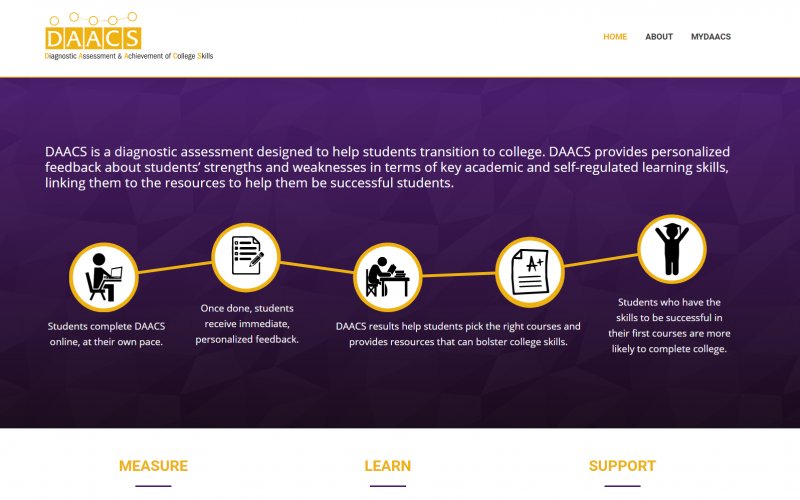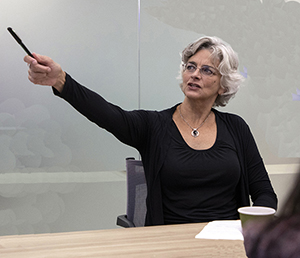A School of Ed Prof Gets Major Federal Support to Boost the Academics of Incoming Students

ALBANY, N.Y. (Sept. 16, 2021) — A student’s academic transition from secondary school to college is rarely easy, so the brainchild of a professor of Educational & Counseling Psychology and her former doctoral student that quantifiably makes a positive difference has caught the attention of the highest educational officials in America.
Heidi Andrade, Jason Bryer (M.S. ’09, PhD ’14), and their research team created Diagnostic Assessment and Achievement of College Skills (DAACS), a suite of technological and social supports to optimize student learning that received a large federal grant in 2015 and was applied to entering classes at two colleges.
Now, the use of DAACS has been funded at five years for $3.8 million — $1.007 million to Andrade and her team at UAlbany — from the U.S. Department of Education’s Institute of Education Sciences (IES).

The grant, administered by CUNY but with the implementation of the program by Andrade’s team across three different campuses, including UAlbany’s, will be assessing DAACS’ efficacy, predictive power and cost effectiveness. “My team’s role will include advisor training, as well as the collection, analysis, and interpretation of data,” she said.
DAACS builds upon the concept of self-regulated learning (SRL), in which learners engage in a repertoire of strategies appropriate for tackling the day-to-day challenges of academic demands. Students take adaptive online assessments in four different areas — SRL, writing, reading and mathematics — and then are presented with feedback and links to open educational resources that can help them become better prepared for college-level work.
Wherever it’s been tried, DAACS has gotten encouraging results, including at two colleges in 2015 and UAlbany in the summer of 2020 — this last application courtesy of a Strategic Allocation of Resources grant from the University.
“DAACS was included in the virtual summer orientation in 2020,” said Andrade. “The 465 newly enrolled students who completed the DAACS assessments had, on average, a GPA 0.3 points higher, on our 4-point scale, than the 1,924 students who did not take it. That's a difference between a 3 and a 3.3. This was just the result of taking the SRL survey — just spending 10 minutes or so to take the assessment. We haven't analyzed the data on student use of the feedback yet.
“As you can imagine, we were very excited about these results. We used rigorous analytic methods to disprove them, but they keep holding up, permitting us to conclude that DAACS is doing its intended job of supporting students in being successful during their first semester in college — if they use it.”
Beyond the initial feedback, the DAACS website has many resources to further improve content knowledge and learning skills. “This new grant from IES will allow us to test the efficacy of including a variety of social and technological supports and nudges to promote student use of DAACS,” said Andrade. “So, stay tuned!”
With the project, Andrade continues her association with Bryer, now an assistant professor and associate director of data science and information systems at CUNY SPS. They are co-project directors of the DOE project, along with Timothy Cleary of Rutgers University
“Jason, one of my former doctoral students, conceived DAACS,” said Andrade. “He had taken my course on SRL, so when he took a position at Excelsior College, he recognized issues related to enrollment and success in college as problems of self-regulated learning as well as of placement tests.
“We wrote grant proposals, got rejections, wrote more grant proposals, and in 2015 finally won a big federal grant from the Fund for the Improvement of Post-secondary Education. That grant enabled us to develop and test the first iteration of DAACS at Excelsior College and Western Governors University. It worked — sort of. Predictably, we learned that if students use the rich resources available to them through DAACS they do better in college.”
She noted that newly enrolled students tend to do fairly well on the assessments, “with the exception of the math assessment, which shows lots of variability.” On the other hand, she deemed “the reading assessment too easy for them — we are updating it.”




